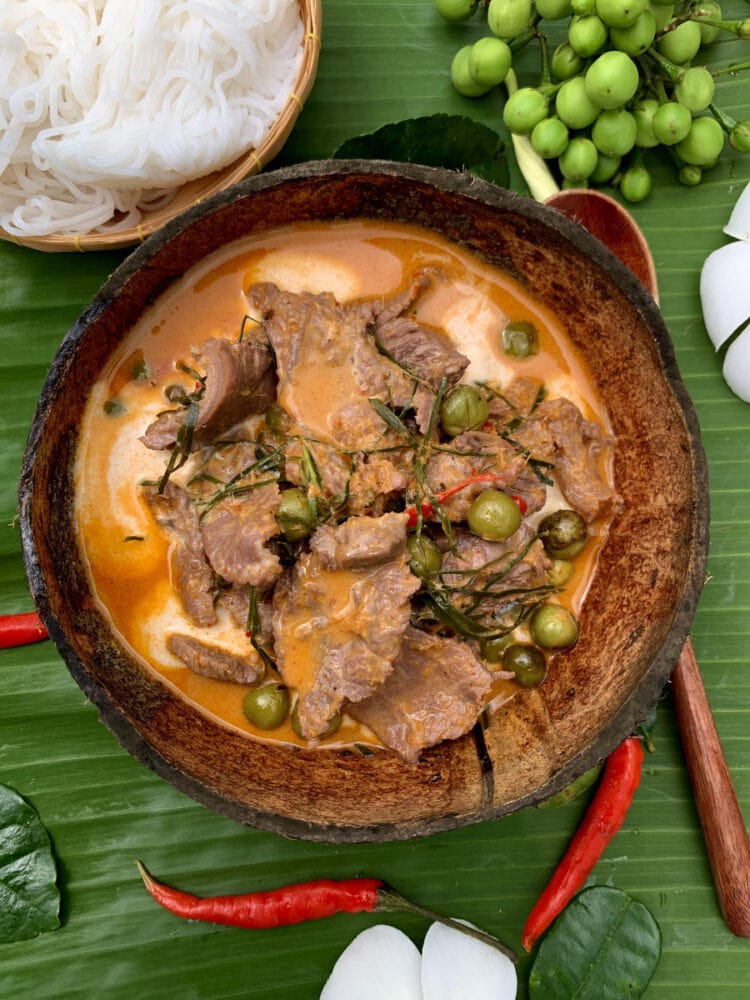A delicious Panang beef curry to warm even the coldest winter nights
What is Panang curry?
Panang curry is particularly interesting; it stands apart from other Thai curries. You may have noticed that many dishes labeled “curry” or “gaeng” in Thai cuisine are closer to soups. They come with plenty of sauce—often thin and fluid; some are even water-based and eaten like lightly thickened, bubbling broths. A bit like Vietnamese curry.
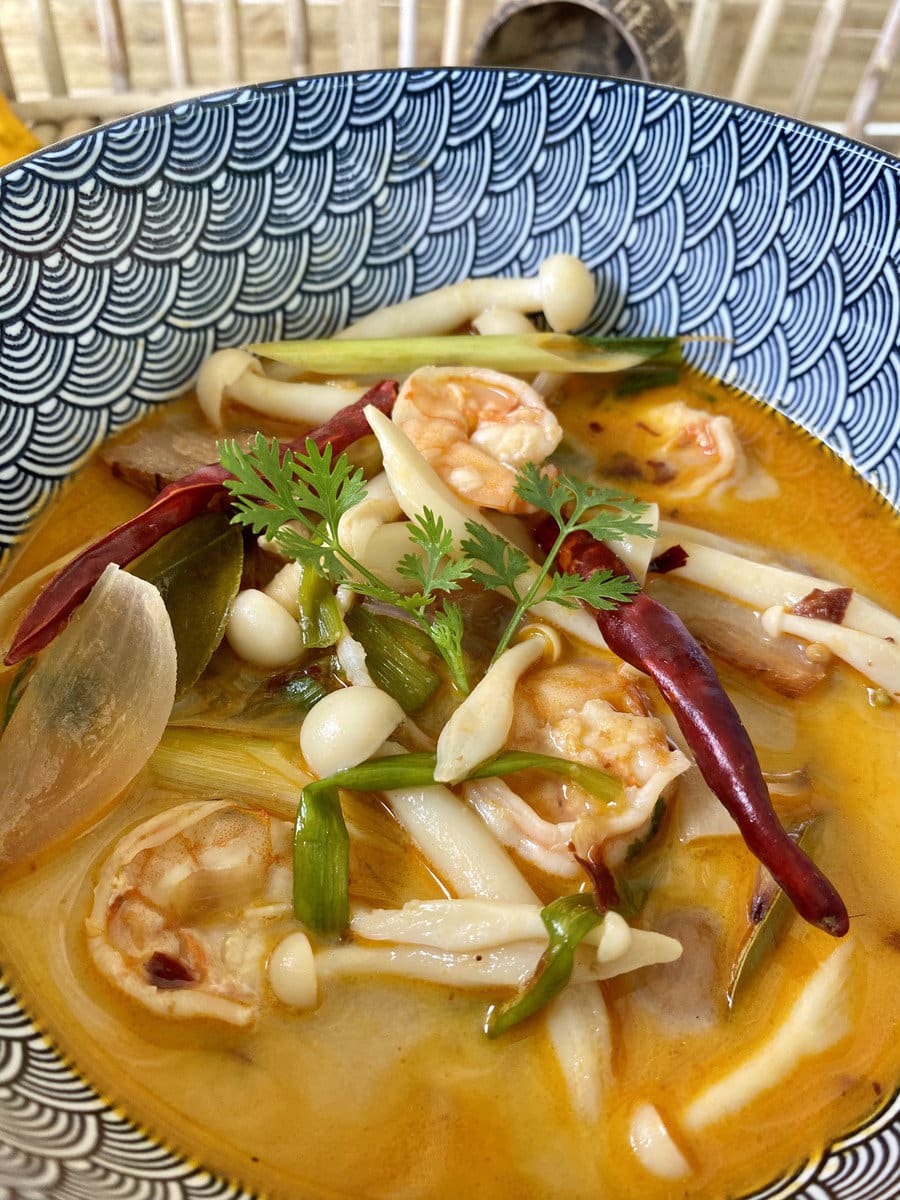
By contrast, Panang is closer to what we usually imagine when we think of the word “curry”: a thicker, richer sauce—just enough to coat every bite and leave a luscious pool at the bottom.
There’s even a term for this ideal amount of liquid: “kluk klik.” Panang is also unique in that it consists exclusively of meat, with no vegetables added. The meat is always thinly sliced; at most, a few eggplants or red bell peppers are added as garnish.
In terms of flavor, it’s similar to a red curry with the addition of a few key ingredients: ground coriander, cumin, and peanuts.
It’s an ideal weeknight curry: quick to make. The cooking technique is almost like a stir-fry—perfect for such a comforting dish!
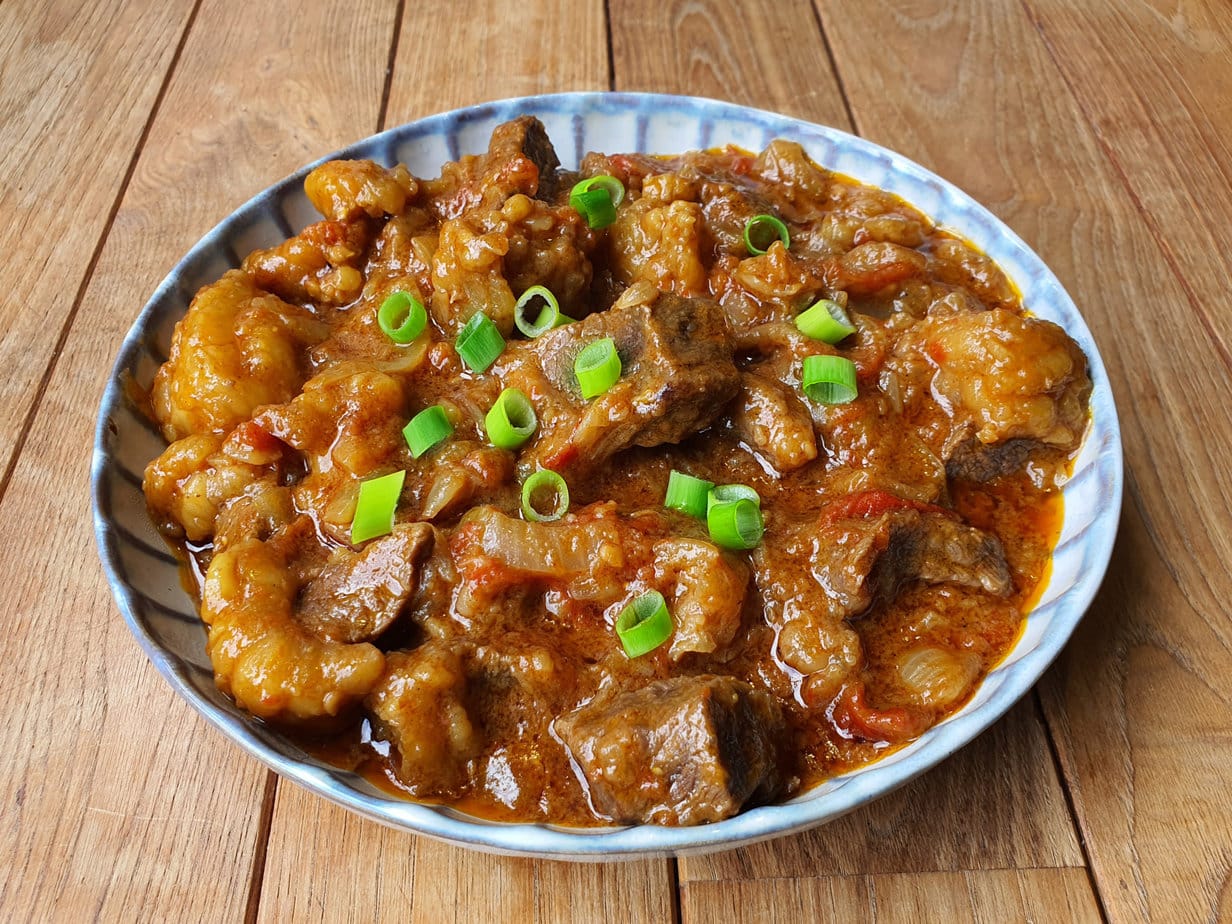
How to ensure the beef stays tender
For the quick method, use the baking soda method.
- Use a quick-cooking cut: This isn’t a long-simmered dish such as Japanese curry. Ideally, choose a naturally tender cut such as ribeye, sirloin, or hanger steak.
- Slice against the grain to keep the muscle fibers as short as possible. Find more details in my article on how to cut meat for Asian dishes.
- Slice very thinly: Freeze the meat for 20 minutes before slicing to make it easier. Otherwise, ask your butcher.
Key ingredients for Panang beef curry
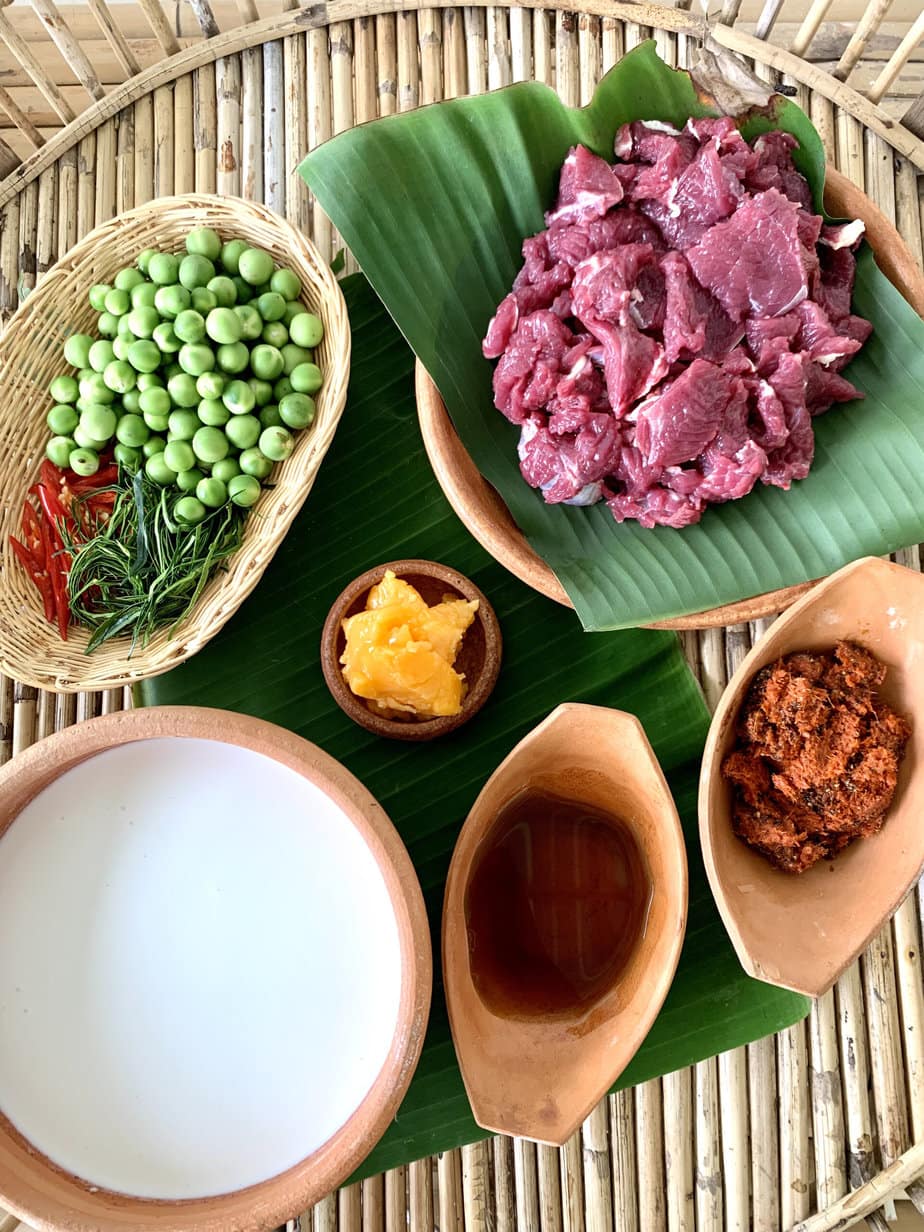
For the Panang curry paste, you have two options: make it at home or buy it ready-made. You can also buy Panang curry paste from Asian grocery stores or online at sites like Amazon.
For the beef, choose a tender cut. See my cooking tips below for more information.
Use full-fat coconut milk for a rich, creamy coconut curry sauce.
Palm sugar adds an authentic, gentle, caramel-like sweetness.
A dash of fish sauce adds a big hit of umami.
Kaffir lime leaves, also known as makrut lime leaves, add bright flavor and a citrusy aroma. They’re a key ingredient in Thai Panang beef curry, so don’t skimp on them. If you can’t find them fresh, you can buy them dried on Amazon.
For the chilies, fresh Thai chilies are best for a spicy kick. For milder heat, use a less spicy chili or even thin slices of bell pepper. You can also remove the seeds to reduce the heat.
Pea eggplants are completely optional but add a touch of authenticity. Thai eggplants can be used as a substitute.
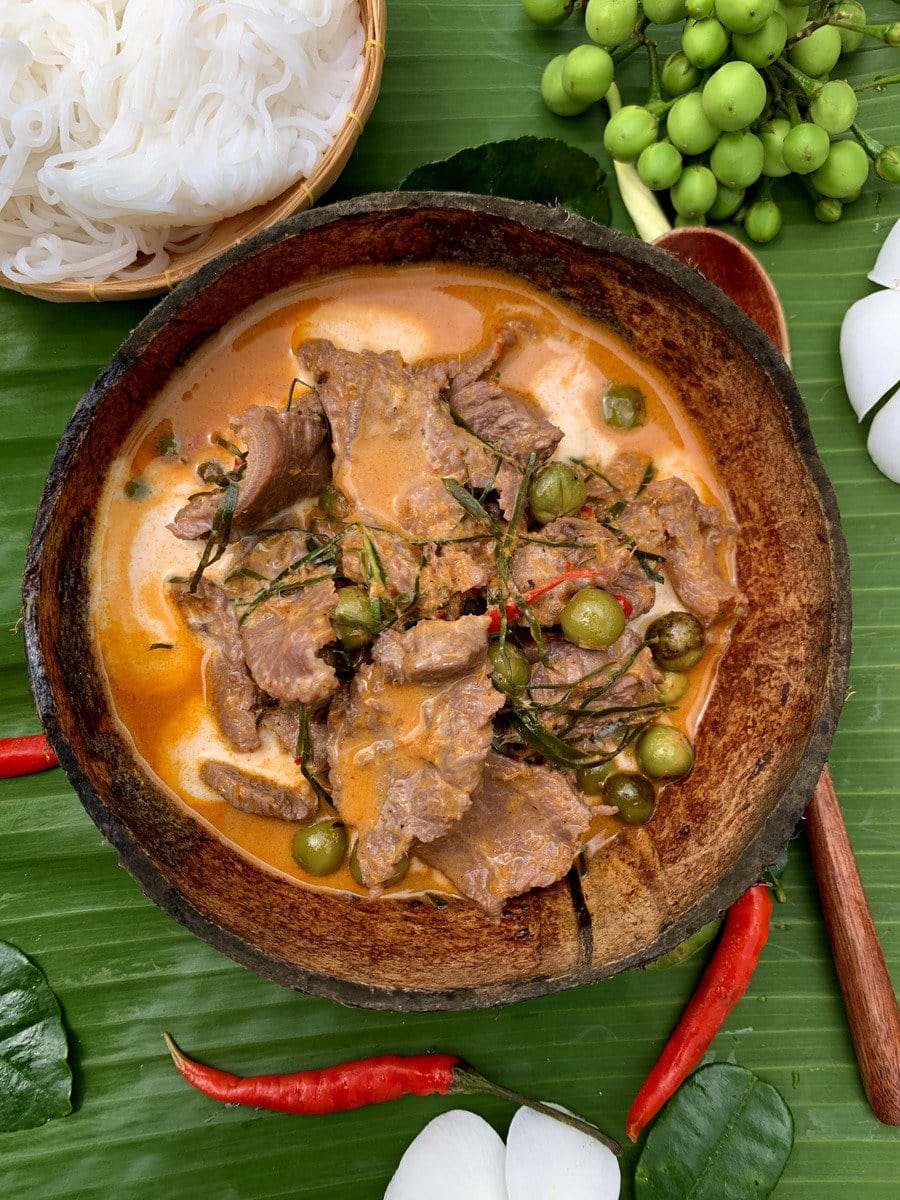
Equipment
- 1 Wok
Ingredients
- 500 ml coconut milk full-fat
- 3 tablespoons Panang curry paste
- 450 g beef
- 4 tablespoons fish sauce
- 2,5 tablespoons palm sugar
- 4 leaves kaffir lime leaves finely shredded
- 4 chilies Thai chilies, to taste, thinly sliced
- 150 g pea eggplants optional
Instructions
- Heat one-third of the coconut milk in a saucepan over medium heat. When the milk thickens and the oil begins to separate, stir in the Panang curry paste.500 ml coconut milk, 3 tablespoons Panang curry paste
- Add the remaining coconut milk once the paste is fully incorporated.
- Bring the coconut curry sauce to a gentle simmer, then add the beef and cook to your preferred doneness.450 g beef
- Add the fish sauce, palm sugar, kaffir lime leaves, and sliced chilies. If using pea eggplants, add them now.4 tablespoons fish sauce, 2,5 tablespoons palm sugar, 4 leaves kaffir lime leaves, 4 chilies, 150 g pea eggplants
- Continue cooking until the pea eggplants are tender and the palm sugar has completely dissolved into the sauce. Serve hot.

Nutrition
This recipe was contributed by Praew from the English-language blog Hungry In Thailand. Stay tuned—she’s a specialist in Thai cuisine and will be sharing more traditional Thai recipes soon.
